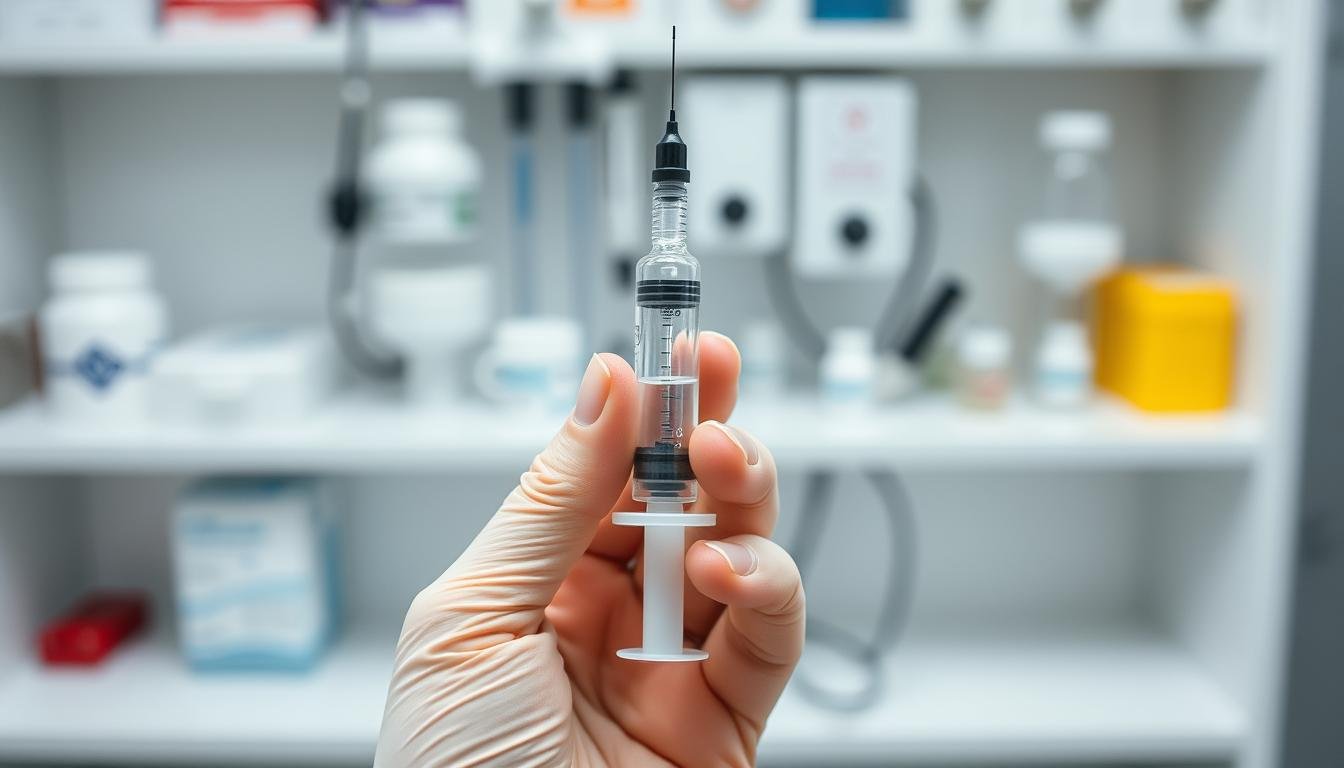For many individuals struggling with stubborn fat, traditional weight loss methods often fall short. Recently, a new approach has gained popularity: using fat injections as a means to aid in weight loss.
This innovative technique differs significantly from conventional weight management strategies, sparking interest among those seeking alternative solutions.
Various types of injections are now available for weight loss purposes, each working in distinct ways to help individuals achieve their health goals.
While these injections can be effective, they are most successful when combined with a balanced diet and regular exercise, emphasizing the importance of a holistic approach to health and body wellness.
This article will delve into the procedure, benefits, and potential side effects of using injections for weight loss, providing readers with a comprehensive understanding to make informed decisions about their weight loss journey.
Key Takeaways
- Fat injections are a new approach to weight management.
- They differ from traditional weight loss methods.
- Various types of injections are available for weight loss.
- Success is enhanced when combined with diet and exercise.
- Understanding the procedure and risks is crucial.
- Medical supervision is essential for injectable weight loss treatments.
Understanding Fat Injections for Weight Loss
Injectable treatments for weight loss are becoming more widely accepted, offering a potentially more effective option for certain individuals. These treatments are part of a broader category of weight management solutions that are gaining attention for their targeted approach.
Fat injections for weight loss primarily fall into two categories: lipotropic injections and GLP-1 receptor agonist medications. Lipotropic injections typically contain a mix of vitamins, amino acids, and other compounds that support fat metabolism, helping the body to more efficiently process fat.
Types of Weight Loss Injections

Current weight loss injections include semaglutide (marketed as Wegovy or Ozempic for diabetes management), tirzepatide (known as Zepbound or Mounjaro for diabetes), and liraglutide (sold as Saxenda or Victoza for diabetes). Semaglutide and liraglutide are GLP-1 receptor agonists that work by targeting one gut hormone receptor, whereas tirzepatide is a dual agonist, targeting two receptors.
How They Differ from Traditional Weight Loss Methods
Unlike traditional weight loss methods that focus on creating a caloric deficit through diet and exercise, injectable weight loss treatments work on metabolic pathways and hormonal regulation. These injections offer a more targeted approach, potentially making them more effective for certain individuals. They are typically used as part of a comprehensive weight management program rather than as standalone solutions.
How Fat Injections to Lose Weight Work
Understanding how fat injections work is crucial for individuals seeking to lose weight effectively. Fat injections are designed to target areas where fat accumulation is more prominent, such as the thighs, arms, and tummy.
Mechanism of Action
The various ingredients in fat injections work in different ways to eliminate fat. For instance, lipotropic compounds help the liver break down and remove fat that is excreted from the body. On the other hand, B12 and L-carnitine improve the body’s ability to burn fat during physical activity. According to a study, lipotropic injections can enhance the liver’s ability to process fat and increase metabolic rate, as discussed on Healthline.
Target Areas and Effectiveness
These injections are most effective in targeting stubborn fat deposits in areas such as the abdomen, thighs, and arms. The concept of spot reduction is often debated, but these injections can truly target specific areas of fat. A comparative analysis of the effectiveness of fat injections in different body areas is presented in the table below.
| Body Area | Effectiveness |
|---|---|
| Abdomen | High |
| Thighs | Moderate |
| Arms | Moderate |
As noted by experts, “Lipotropic injections can be a valuable adjunct to diet and exercise for individuals seeking to lose weight, particularly in stubborn areas.”
Lipotropic Injections: Composition and Function
To appreciate the role of lipotropic injections in weight loss, it’s essential to examine their ingredients. The primary components include Vitamin B-12, Methionine, Inositol, and Choline.
Key Ingredients
The key ingredients in lipotropic injections play distinct roles in fat metabolism. Vitamin B-12 supports energy production and helps convert food into glucose, potentially aiding weight loss efforts. Methionine, an essential amino acid, prevents fat buildup in the liver and assists in breaking down fat.
How These Components Aid Fat Metabolism
Inositol helps regulate insulin and may improve glucose utilization, potentially supporting weight management. Choline functions by transporting fats from the liver and preventing fat accumulation. Together, these components work synergistically to enhance fat metabolism and support weight loss. For optimal results, these injections are often recommended alongside diet and exercise.
GLP-1 Receptor Agonist Injections
GLP-1 receptor agonist injections have emerged as a groundbreaking treatment for weight loss, offering new hope for individuals struggling with obesity. These medications work by mimicking natural hormones that regulate appetite and digestion.
Semaglutide (Wegovy/Ozempic) and Tirzepatide (Zepbound/Mounjaro)
Semaglutide, originally developed to manage diabetes, has shown significant promise in aiding weight loss. Tirzepatide, a dual GIP/GLP-1 receptor agonist, has also demonstrated substantial weight loss effects. Clinical trials have shown that patients can lose up to 20-22% of their excess body weight with these medications.
How These Medications Suppress Appetite and Slow Digestion
These medications suppress appetite and slow digestion by mimicking natural hormones, leading to reduced calorie intake. This mechanism not only aids in weight loss but also has potential benefits for patients with obesity-related health conditions.
The Procedure: What to Expect
For individuals looking to use fat injections as a weight loss method, knowing what to expect is essential. The treatment involves a series of injections that aid in weight loss. Understanding the administration process and the frequency of these injections is vital for patients.
Administration Process
The administration of fat injections, including lipotropic injections and GLP-1 receptor agonist medications, is typically done via injection into the subcutaneous tissue. Healthcare providers usually administer these injections into areas such as the abdomen or thigh. The technique used can vary depending on the type of injection and the patient’s specific needs. 
Frequency and Duration of Treatment
The frequency of injections can range from weekly to monthly, depending on the type of medication and the individual patient’s response. Some clinics offer packages that include multiple injections as part of a comprehensive weight loss plan. The duration of treatment varies; some patients may require ongoing injections, while others may have a defined treatment period. Doctors closely monitor patients’ progress and adjust the treatment plan as necessary to ensure effective weight loss.
Benefits of Using Fat Injections for Weight Loss
The use of fat injections for weight loss offers a multifaceted approach to achieving a healthier body composition. These injections are not just a simple solution; they provide a comprehensive strategy that addresses various aspects of weight loss and overall health.
Targeted Fat Reduction
One of the significant benefits of fat injections is their ability to target stubborn fat deposits that are often resistant to diet and exercise. By directly delivering lipotropic compounds to the body, these injections help in reducing fat in specific areas, leading to a more toned and sculpted physique.
Enhanced Metabolism
Fat injections, particularly those containing components like Vitamin B-12, enhance metabolic rate, helping the body process and eliminate fat more efficiently. This metabolic boost not only aids in weight loss but also contributes to increased energy levels, making it easier for patients to adhere to exercise regimens.
Additional Health Benefits
Beyond weight loss, fat injections offer several other health benefits. They can improve insulin sensitivity, which is particularly beneficial for patients with diabetes. Additionally, some injections have anti-inflammatory effects, contributing to overall health improvement. By supporting a healthier metabolism and aiding in weight management, these injections can lead to better health outcomes, including improved blood pressure and cholesterol levels.
Potential Risks and Side Effects
While fat injections can be an effective weight loss solution, it’s crucial to understand the potential risks and side effects associated with this treatment. Patients considering fat injections for weight loss should be aware of the possible complications.
Common Side Effects
Common side effects of lipotropic injections may include pain at the injection site, nausea, and headaches. GLP-1 receptor agonists, such as semaglutide, can cause more significant side effects like nausea, vomiting, diarrhea, constipation, and reflux. These effects are seen in approximately 10%-20% of patients.

When to Consult a Doctor
It’s essential for patients to consult their doctor if they experience any severe side effects, such as allergic reactions or pancreatitis. Additionally, patients should discuss their medical history, including any conditions like diabetes, to ensure safe treatment. If side effects persist or worsen, seeking medical attention is crucial to prevent further complications and adjust the treatment plan as needed.
Ideal Candidates for Fat Injection Weight Loss Treatments
Determining the ideal candidate for fat injection weight loss treatments involves assessing various health and lifestyle factors. These treatments are designed to complement a healthy diet and exercise regimen, helping individuals achieve their weight loss goals, particularly in stubborn areas.
Medical Considerations and Contraindications
Certain medical conditions can make individuals ineligible for fat injection weight loss treatments. For instance, people with hyperthyroidism, kidney or liver disease, or cardiovascular disease should avoid these treatments. Additionally, pregnant or breastfeeding women, individuals taking certain medications, and those allergic to the ingredients in fat-burning injections are not suitable candidates. Healthcare providers evaluate these factors before recommending treatments, ensuring patient safety and the effectiveness of the therapy. For more information on specific contraindications, you can visit this resource.
Complementary Lifestyle Factors
Fat injection weight loss treatments work best for individuals who are already committed to a healthy lifestyle. A balanced diet and regular exercise are crucial for achieving and maintaining weight loss. Moreover, mental readiness and a commitment to long-term health management play significant roles in the success of these treatments. Patients with obesity-related health conditions, such as type 2 diabetes, may particularly benefit from these treatments as they can aid in weight management and improve overall health outcomes.

Conclusion: Integrating Fat Injections into Your Weight Loss Journey
As the landscape of weight loss treatments continues to evolve, fat injections have become an increasingly important option for people dealing with obesity and related health issues.
Throughout this article, we’ve explored the various aspects of using fat injections for weight loss, including their composition, benefits, and potential risks. Key ingredients like semaglutide have been shown to be effective in suppressing appetite and slowing digestion, making them valuable tools in the management of obesity.
It’s crucial to consult with a healthcare professional before starting any injectable weight loss treatment to discuss personal health goals and medical history. While these injections can be effective, they require a long-term commitment and should be part of a broader weight management strategy that includes lifestyle modifications.
The advancements in weight loss medications, including fat injections, are providing more options for individuals struggling with obesity and related health conditions like diabetes. By understanding the benefits and risks, individuals can make informed decisions about their weight loss journey.


